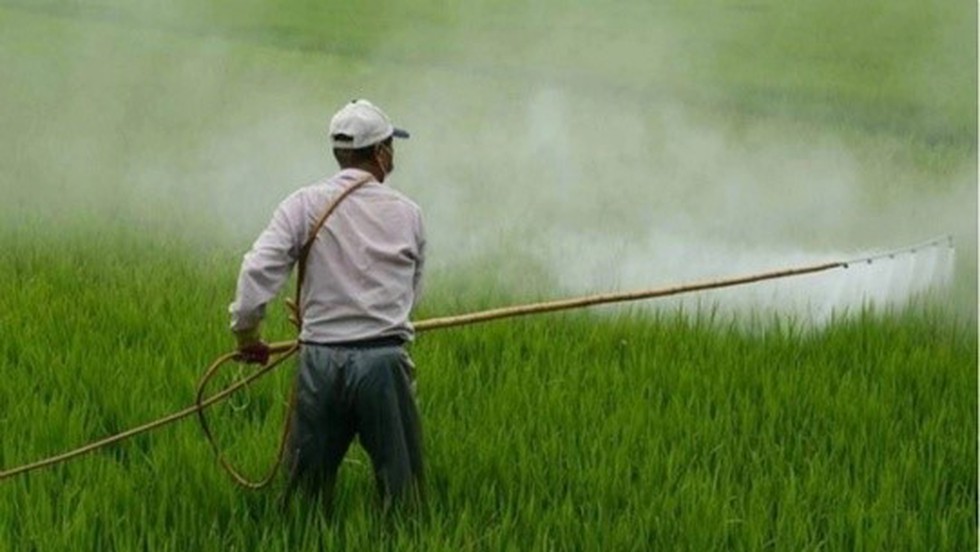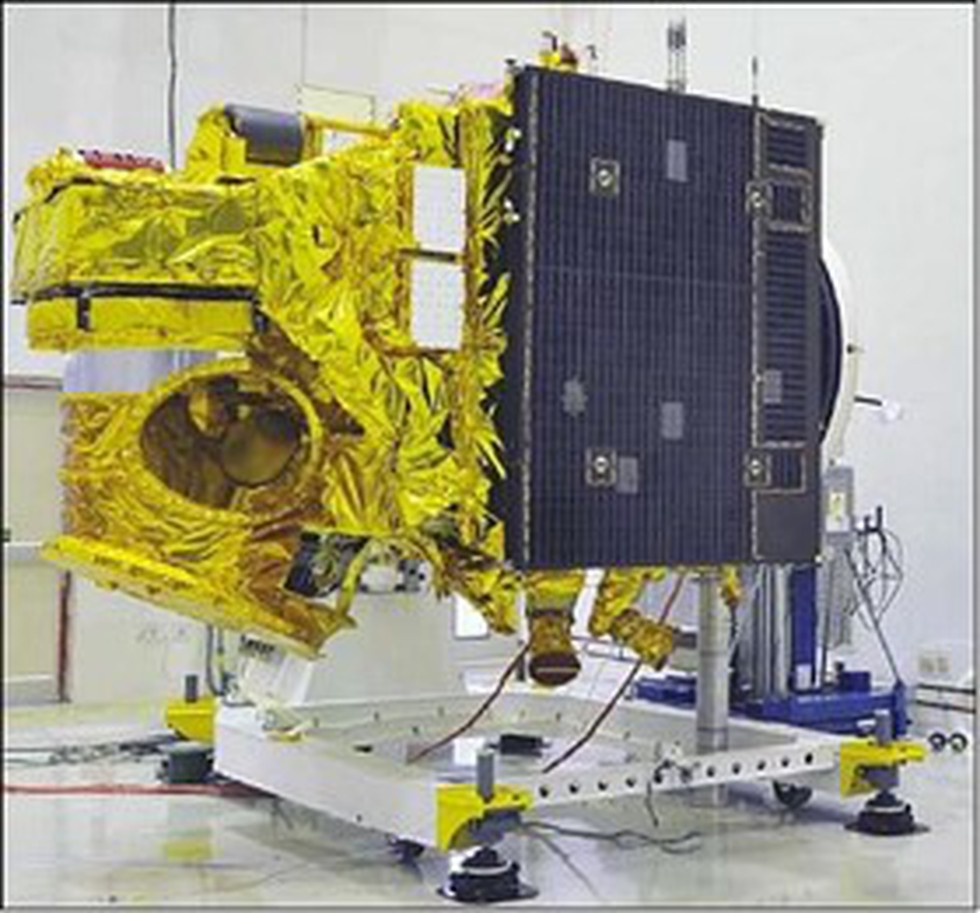
About Emergency Credit Line Guarantee Scheme (ECLGS):
- It was launched by the Government of India in 2020 as a special scheme in view of the Covid-19 crisis.
- Objective: To provide 100 percent guaranteed coverage to the banks, non-banking financial institutions (NBFCs), and other lending institutions to extend emergency credit to business entities that have suffered due to the Covid-19 pandemic and are struggling to meet their working capital requirements.
- ECLGS is under the operational domain of the Ministry of Finance, Department of Financial Services (DFS).
- National Credit Guarantee Trustee Company Ltd (NCGTC) has been set up by the Union Ministry of Finance to manage and provide guarantees to these loans.
- ECLGS was launched in different phases - ECLGS 1.0, ECLGS 2.0, ECLGS 3.0, and ECLGS 4.0. In different phases, the scope of this scheme was increased to include multiple sectors.
- Sanctions/disbursements are made by lending institutions based on assessment of the borrower’s requirements and eligibility.
- Processing charges, foreclosure, and prepayment charges are waived under the scheme.
- No collateral is required for this scheme.
- ECLGS 1.0:
- Under the scheme, borrowers could avail of additional credit of up to 20 percent of their overall outstanding credit as on February 29, 2020.
- Eligibility: Business Enterprises/MSMEs with outstanding loans of up to Rs 25 crore as of February 29, 2020, with an annual turnover cap of Rs 100 crore for the financial year 2019-2020.

About nano liquid DAP fertilizer:
- It is a concentrated phosphate-based fertilizer.
- It provides phosphorous nutrition throughout the crop growth and development cycle.
- Nano-DAP is jointly manufactured by Indian Farmers Fertiliser Cooperative (IFFCO) in association with a private player Coromandel.
- Nano-DAP will be sold at Rs 600 per bottle of 500 ml. One bottle will be equivalent to one bag of DAP, which currently costs Rs 1,350.
- Expected benefits:
- DAP is the second most consumed fertilizer in the country after urea.
- Out of the estimated annual consumption of around 10-12.5 million tonnes, local production is around 4-5 million tonnes, while the rest has to be imported.
- Nano-DAP will help to bring down India’s fertilizer import bill.
- It is also expected to contribute to bringing down the annual subsidy on non-urea fertilizers.
What is Fertilizer Control Order(FCO)?
- It has been issued under the Essential Commodities Act 1955.
- It is administered by Department of Agriculture Cooperation, Govt. of India.
- The FCO lays down,
- what substances qualify for use as fertilizers in the soil;
- product-wise specifications;
- methods for sampling and analysis of fertilizers;
- the procedure for obtaining a license/registration as a manufacturer/dealer in fertilizers;
- conditions to be fulfilled for trading thereof;

About UN High Seas Treaty:
- It is the first-ever treaty to protect the world's oceans that lie outside national boundaries.
- It is also known as the ‘Paris Agreement for the Ocean.’
- It is a legally binding treaty to protect marine life in international waters.
- It aims to place 30% of the seas into protected areas by 2030 (a pledge made by countries at the UN biodiversity conference in 2022).
- It will provide a legal framework for establishing vast marine protected areas (MPAs) to protect against the loss of wildlife and share out the genetic resources of the high seas.
- It also covers environmental assessments to evaluate the potential damage of commercial activities, such as deep-sea mining.
- It will establish a conference of the parties (CoP) that will meet periodically and enable member states to be held to account on issues such as governance and biodiversity.
- The treaty also includes a pledge by signatories to share ocean resources.
- The treaty is built on the legacy of the UN Convention on the Law of the Sea (UNCLOS), which is the last international agreement on ocean protection, signed 40 years ago in 1982. UNCLOS established an area called the high seas.
What are High Seas?
- The high seas begin at the border of countries’ exclusive economic zones, which extend up to 370km (200 nautical miles) from coastlines.
- Beyond that point, the seas are under the jurisdiction of no country, and all countries have a right to fish, ship, and do research.
- They make up more than 60% of the world’s oceans by surface area.
- Activities on the high seas are often unregulated and insufficiently monitored, leaving them vulnerable to exploitation.

About UN High Seas Treaty:
- It is the first-ever treaty to protect the world's oceans that lie outside national boundaries.
- It is also known as the ‘Paris Agreement for the Ocean.’
- It is a legally binding treaty to protect marine life in international waters.
- It aims to place 30% of the seas into protected areas by 2030 (a pledge made by countries at the UN biodiversity conference in 2022).
- It will provide a legal framework for establishing vast marine protected areas (MPAs) to protect against the loss of wildlife and share out the genetic resources of the high seas.
- It also covers environmental assessments to evaluate the potential damage of commercial activities, such as deep-sea mining.
- It will establish a conference of the parties (CoP) that will meet periodically and enable member states to be held to account on issues such as governance and biodiversity.
- The treaty also includes a pledge by signatories to share ocean resources.
- The treaty is built on the legacy of the UN Convention on the Law of the Sea (UNCLOS), which is the last international agreement on ocean protection, signed 40 years ago in 1982. UNCLOS established an area called the high seas.
What are High Seas?
- The high seas begin at the border of countries’ exclusive economic zones, which extend up to 370km (200 nautical miles) from coastlines.
- Beyond that point, the seas are under the jurisdiction of no country, and all countries have a right to fish, ship, and do research.
- They make up more than 60% of the world’s oceans by surface area.
- Activities on the high seas are often unregulated and insufficiently monitored, leaving them vulnerable to exploitation.

About Raisina Security Dialogue:
- It is a conference of intelligence and security chiefs and top officials from around the world.
- It is modeled on the lines of the Munich Security Conference and Singapore’s Shangri-La Dialogue.
- It is organized by the Research and Analysis Wing (R&AW) and the National Security Council Secretariat (NSCS).
- It was held for the first time in April 2022.
- Raisina Security Dialogue 2023:
- This is the second edition of the dialogue.
- It saw participation from over 26 countries, including intelligence chiefs from the U.K, Japan, France, and Bahrain.
- The focus of the discussions was largely on global security, which encompassed counterterrorism, radicalization, drug trafficking, and illegal arms smuggling, among others.
Munich Security Conference:
- It is an annual conference on international security policy that has been held in Munich, Bavaria, Germany since 1963.
- It has become the most important independent forum for the exchange of views by international security policy decision-makers.
- The list of attendees includes heads of state, governments and international organizations, ministers, members of parliament, high-ranking representatives of armed forces, science, and civil society, as well as business and media.
- The conference is held annually in February. The venue is the Hotel Bayerischer Hof in Munich, Bavaria, Germany.
Shangri-La Dialogue:
- It is Asia's premier defense and security summit.
- It is attended by Defence Ministers, permanent heads of ministries and military chiefs of 28 Asia-Pacific countries.
- It is organized by an independent think-thank, International Institute for Strategic Studies (IISS).
- The summit is named after the Shangri-La hotel in Singapore, where it has been held since 2002.

What is an Organoid?
- Organoids are lab-grown tissues that resemble organs.
- They are three-dimensional structures usually derived from stem cells.
- They are smaller, simpler versions of an organ and can mimic the architecture and function of specific organs in the body.
- They can be crafted to replicate much of the complexity of an organ or to express selected aspects of it, like producing only certain types of cells.
- Organoids can range in size from less than the width of a hair to five millimeters.
What is meant by ‘Organoid Intelligence’?
- It refers to the ability of organoids to exhibit certain behaviors or responses that are indicative of intelligence, such as problem-solving, learning, or adapting to changing environments.
- It is an emerging field where researchers are developing biological computing using 3D cultures of human brain cells (brain organoids) and brain-machine interface technologies.
- These organoids share aspects of brain structure and function that play a key role in cognitive functions like learning and memory.
- They would essentially serve as biological hardware and could one day be even more efficient than current computers running AI programs.
- OI requires scaling up current brain organoids into complex, durable 3D structures enriched with cells and genes associated with learning and connecting these to next-generation input and output devices and AI/machine learning systems.
- OI requires new models, algorithms, and interface technologies to communicate with brain organoids, understand how they learn and compute, and process and store the massive amounts of data they will generate.
What are Biocomputers?
- They are a type of computer that use biological molecules, such as DNA or proteins, to perform computational tasks.
- These computers can perform certain operations much faster than traditional electronic computers and have the potential to revolutionize fields such as medicine and biotechnology.
- One type of biocomputer is a DNA computer, which uses strands of DNA to store and process information.

About Apple cultivation:
- In India apple is primarily cultivated in Jammu & Kashmir; Himachal Pradesh; the hills of Uttar Pradesh and Uttaranchal.
- It is also cultivated to a small extent in Arunachal Pradesh; Nagaland; Punjab and Sikkim.
- Climatic conditions required
- The apple is a temperate fruit crop.
- However, in India, the apple-growing areas do not fall in the temperate zone but the prevailing temperate climate of the region is due to the Himalayan ranges and high altitudes.
- Temperature: The average summer temperature should be around 21-24 degrees C during the active growth period.
- It can be grown at an altitude of 1500- 2700 m above sea level.
- Rainfall: Well-distributed rainfall of 1000-1250 mm throughout the growing season is most favourable for the optimum growth and fruitfulness of apple trees.
- Soil: Apples grow best on well-drained, loamy soils.

About Court martial:
- A court-martial has been granted the authority to judge the guilt of members of the armed forces which is subject to military law, and, in the case, if the accused or defendant is found guilty, to decide upon punishment which they have to carry.
What is the legal Provision related to court martial in India?
- The Armed Forces Tribunal Act 2007 was passed by the Parliament and led to the formation of the Armed Forces Tribunal.
- This tribunal is empowered with the adjudication of disputes and complaints concerning the commission, appointments, enrolments and conditions of service in respect of persons subject to the Army Act, 1950, The Navy Act, 1957 and the Air Force Act, 1950
- Composition of the Armed Forces Tribunal
- The Judicial Members are retired High Court Judgesand Administrative Members are retired Members of the Armed Forces who have held the rank of Major General/ equivalent or above for a period of three years or more.
- Judge Advocate General (JAG) who has held the appointment for at least one year is also entitled to be appointed as the Administrative Member.
- There are four kinds of courts-martial in India namely; General Court Martial (GCM), District Court Martial (DCM), Summary General Court Martial (SGCM) and Summary Court Martial (SCM).
- Under the Army Act, army courts can try personnel for all kinds of offences, except for murder and rape of a civilian, which are primarily tried by a civilian court of law.
- Pardoning power: The president of India can use his judicial power under Article 72 of the Constitution to pardon, reprieve, respite or remission of punishment or sentence given by a court martial.

About Swachh Sujal Shakti Samman:
- Swachh Sujal Shakti Samman’ is to highlight and acknowledge the leadership and contribution of women at the grass-root level in the journey towards making a ‘Swachh Sujal Bharat’.
- The women achievers who have contributed exceptionally to ODF Plus Model Villages, Har Ghar Jal Villages, Water Conservation, etc. under the National Flagship Missions were felicitated.
- This year’s event was organized by the Union Ministry of Jal Shakti to honour the women champions of the rural water and sanitation sector.
What is the Catch the Rain campaign?
- Catch the Rain is a Jan Andolan campaign to encourage all stakeholders to create rainwater harvesting structures (RWHS).
- Tag line: Catch the rain, where it falls, when it falls.
- The campaign is implemented by the National Water Mission (NWM), Ministry of Jal Shakti.
- The campaign takes place across the country, in both rural and urban areas.

About Megha-Tropiques-1:
- Megha-Tropiques is an Indo-French Joint Satellite Mission for studying the water cycle and energy exchanges in the tropics.
- Objective: To understand the life cycle of convective systems that influence tropical weather and climate and their role in the associated energy and moisture budget of the atmosphere in tropical regions.
- It provides scientific data on the contribution of the water cycle to the tropical atmosphere, with information on condensed water in clouds, water vapour in the atmosphere, precipitation, and evaporation.
- With its circular orbit inclined 20 deg to the equator, the Megha-Tropiques is a unique satellite for climate research that should also aid scientists seeking to refine prediction models.
- The Megha-Tropiques has day, night and all-weather viewing capabilities; it passes over India almost a dozen times every day, giving scientists an almost real-time assessment of the evolution of clouds.
Megha-Tropiques carries the following four payloads:
- Microwave Analysis and Detection of Rain and Atmospheric Structures (MADRAS), an Imaging Radiometer developed jointly by CNES and ISRO
- Sounder for Probing Vertical Profiles of Humidity (SAPHIR), from CNES.
- Scanner for Radiation Budget (ScaRaB), from CNES.
- Radio Occultation Sensor for Vertical Profiling of Temperature and Humidity (ROSA), procured from Italy.

About INS Trikand:
- INS Trikand is a frontline frigate equipped with a versatile range of weapons and sensors. The ship is a part of the Indian Navy's Western Fleet, based in Mumbai.
- It belongs to the Talwar class of guided missile frigates.
- It was built by the Yantar shipyard in Kaliningrad, Russia.
Key facts about the International Maritime Exercise/ Cutlass Express 2023
- It is one of the largest multinational maritime exercises in the world.
- While this is Indian Navy’s maiden IMX participation, it also marks the second occasion where an Indian Naval ship is participating in an exercise conducted by the combined maritime forces.
- The newest iteration of Cutlass Express will primarily be carried out in Djibouti, Kenya and Mauritius.
- It will feature a series of shore-based and at-sea training activities that will take place along the eastern coast of Africa.
- It aims to bolster regional security and stability in the Western Indian Ocean.
- Participating nations will include the US, Canada, Djibouti, Madagascar, Mozambique, Mauritius, the UK, Japan, Tanzania, Seychelles, France, Kenya, Georgia, Comoros and Greece.


.jpg)

.jpg)
























































































































































.png)
.png)
.png)
.png)
.png)


.png)
.png)
.png)





.png)
.png)






.png)
.png)
.png)
.png)
.png)
.png)
.png)
.png)
.png)

.png)







.png)
.png)


.png)
.png)
.png)


.png)

.png)
.png)





.jpg)

.png)
.png)


.png)

.png)
.png)
.png)

.jpg)

.jpg)


.png)

.png)
.png)
.png)
.png)
.png)
.png)
.png)
.png)
.png)
.png)




.png)

.png)





.png)
.png)
.png)
.png)
.png)
.png)
.png)
.png)
.png)
.png)
.jpg)
.jpg)

.png)
.png)
.png)
.png)
.png)
.png)
.png)
.png)
.png)
.png)
.png)
.png)
.png)
.png)
.png)
.png)
.png)
.png)
.png)
.png)
.png)
.png)



.png)
.png)

.jpg)
.jpg)


.jpg)
.jpg)
.jpg)
.jpg)
.jpg)

.jpg)








.jpg)
.jpg)
.jpg)
.jpg)
.jpg)























.jpg)


















.jpg)
.jpg)






























































































.jpg)
.jpg)


























.jpg)

.jpg)










.jpg)








.jpg)




.jpg)










.jpg)


















.jpg)












































.jpg)














.jpg)
.jpg)
.jpg)





.jpg)

.jpg)
.jpg)





































































.jpg)


































.jpg)
.jpg)
















































.jpg)












.jpg)


.jpg)




.jpg)
.jpg)
.jpg)

.jpg)
.jpg)
.jpg)
.jpg)

.jpg)
.jpg)
.jpg)

.jpg)
.jpg)
.jpg)
.jpg)
.jpg)
.jpg)
.jpg)
.jpg)

.jpg)


.jpg)
.jpg)
.jpg)
.jpg)
.jpg)
.jpg)
.jpg)
.jpg)
.jpg)
.jpg)











.jpg)
.jpg)





.jpg)
.jpg)
.jpg)
























.jpg)
























.jpg)









.jpg)
.jpg)







.jpg)
.jpg)









































.jpg)
.jpg)
.jpg)
.jpg)
.jpg)

.jpg)
.jpg)
.jpg)
.jpg)
.jpg)


.jpg)
.jpg)
.jpg)
.jpg)
.jpg)

.jpg)
.jpg)
.jpg)
.jpg)
.jpg)
.jpg)
.jpg)
.jpg)
.jpg)
.jpg)
.png)

.png)
.png)

.png)
.png)
.png)
.png)


.jpg)
.jpg)

.jpg)
.jpg)
.jpg)

.png)
.png)
.png)
.png)
.png)
.png)
.png)

.png)
.png)
.png)
.png)
.png)
.png)
.png)
.png)
.png)
.png)





































































-min.png)



.png)




.png)








































